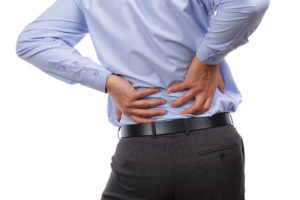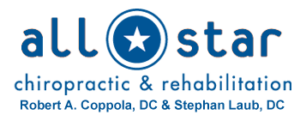 Spine and Disc 101 – The vertebral disc in the spine is an interesting and unique structure. Its primary purpose is to act as a shock absorber between adjacent vertebrae. Spinal discs also act as ligaments that hold the vertebrae of the spine together and as cartilaginous joints that allow for slight mobility in the spine.
Spine and Disc 101 – The vertebral disc in the spine is an interesting and unique structure. Its primary purpose is to act as a shock absorber between adjacent vertebrae. Spinal discs also act as ligaments that hold the vertebrae of the spine together and as cartilaginous joints that allow for slight mobility in the spine.
- Spinal Discs – Spinal discs are sensitive, spongy pads found between the specialized bones of the spinal column. Their main function is to act as shock absorbers for the spine during movement and to hold the highly pressurized spin center in place.
- Vertebral Discs – There are a total of twenty-three vertebral discs in the spinal column. Specific problems with any of these discs may prompt different symptoms, including back pain, neck pain, and sciatica.
- Our Discs Are Different As We Age – As we age the area between our disc start to harden and that is the reason adults are prone to disc injury and degeneration. As children the spinal discs are fluid–filled sacs that start to solidify as part of the normal aging process. By early adulthood, the blood supply stops and soft inner material hardens. By middle age, our discs are hard, almost like a piece of hard rubber.
Chiropractic Care and Herniated Discs
A chiropractor can help address back pain and other herniated disc symptoms. At your initial appointment, your chiropractor will go through your medical history, do a physical exam, and perform orthopedic and neurological tests. Chiropractic care is a safe and effective way to treat herniated and bulging disc problems. In some cases, your chiropractor may need an MRI to be able to prescribe a suitable treatment plan specific to your needs including adjustment and therapeutic exercises. In many cases, surgery and injections should be considered your last option due to the risks and side effects involved.
Signs and Symptoms You May Have a Herniated Disc
A herniated disc alone may not cause discomfort. Pain occurs when pressure is put on the nerve roots or spinal cord. Depending on the location of the herniated disc, , symptoms will occur in the area of the body affected by the nerve.. The most common signs and symptoms of a herniated disk are…
- Arm or Leg Pain – If your herniated disk is in your lower back, you’ll typically feel the most intense pain in your buttocks, thigh and calf. It may also involve part of the foot. If your herniated disk is in your neck, the pain will typically be most intense in the shoulder and arm. This pain may shoot into your arm or leg when you cough, sneeze or move your spine into certain positions.
- Numbness or Tingling – People who have a herniated disk often experience numbness or tingling in the body part served by the affected nerves.
Weakness – Muscles served by the affected nerves tend to weaken. This may cause you to stumble, or impair your ability to lift or hold items.
Good Chiropractors Can Help With The Following…
Slipped and Bulging Discs
Discs are firmly embedded between the vertebrae and held in place by ligaments connecting the spinal bones and muscle. There is little room for discs to “slip” a bulging or herniated disc however, can occur when gel or fluid pushes out through a crack in the exterior. This can irritate nearby nerves and result in pain, numbness or weakness in an arm or leg. Many people however, experience no symptoms from a herniated disc.
Imagine if you jump up and down. What would happen to the stack of bony vertebrae that make up the spine without the cushioning and support of these discs? Now, move your back from side to side. Again, you can visualize the give and take of the discs between the vertebrae. Without these discs, your spine couldn’t function.
Symptoms may vary greatly, depending on the position of the herniated disc. A herniated disc in the neck may cause symptoms in the shoulder, arms or chest. Herniated discs in the lower back my cause sciatica, with leg pain and other nerve related symptoms. Also a herniated disc in the lower back may be felt in the buttock and down the back of the leg to the ankle or foot.
Protrusions and Prolapsed Discs
There are two types of herniated discs: protrusions and prolapsed. A protrusion can occur if the disc bulges, pushing it out of shape. Disc protrusion is a common form of spinal disc deterioration that can cause neck and back pain. Changes occurring with the regular aging process are responsible for disc deteriorations, although an injury might speed the degenerative process. However, a protruding disc may go undetected unless it encroaches upon a nearby nerve. A prolapsed disc is one that bulges out so much, it actually separated from the rest of the discs. A prolapsed (herniated) disc occurs when the outer fibers of the intervertebral disc are injured, and the soft material known as the nucleus pulposus, ruptures out of its enclosed space. The prolapsed or ruptured disc material can enter the spinal canal, squashing the spinal cord, but more frequently the spinal nerves. In this scenario if the disc pushes on the spinal cord or puts pressure on nerves, it causes severe pain that makes regular daily activities such as sitting, standing, walking, lifting, using the bathroom, sneezing or coughing very difficult.
All Star Chiropractic has an excellent record with alleviating back and neck pain.
Contact Us (859-727-6888) for more information!
—
 About All Star Chiropractic
About All Star Chiropractic
Unlike conventional medicine, which focuses on attempting to treat disease once it occurs, All Star Chiropractic and Rehabilitation emphasizes improving your health in an effort to reduce the risk of pain and illness in the first place. Most people would rather be healthy and avoid illness, if they could. This is one of the main reasons for the big surge in the popularity of our wellness center.
>> Learn More


